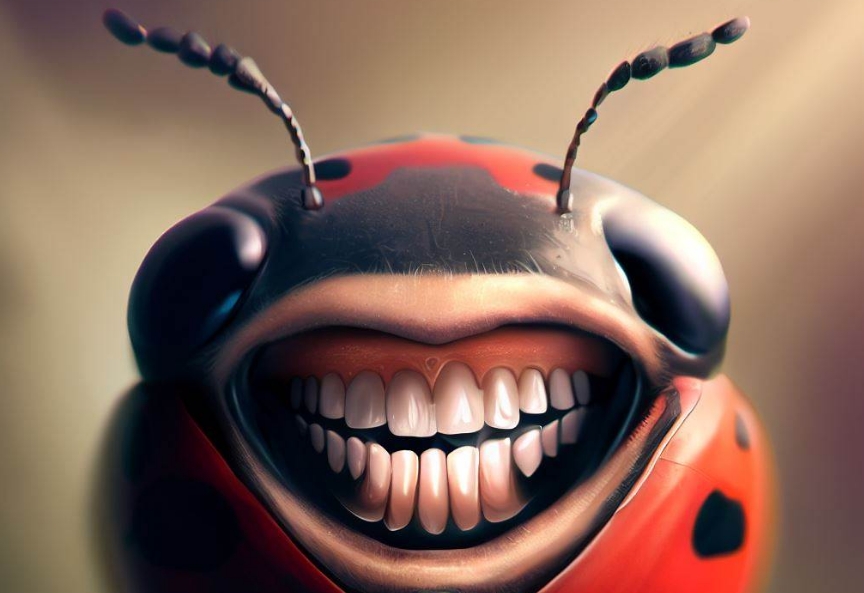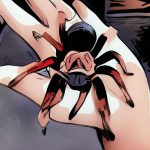Did you know that ladybugs are more than just cute little red bugs with spots? They might even have a slightly darker side. Yes, that’s right, it may come as a surprise, but ladybugs can indeed bite. Now you might ask, do all ladybugs bite? Well, let’s find out!
Comparison table: ladybug species and their biting behaviors
| Species | Bite Humans | Discharge Yellow Liquid |
|---|---|---|
| Ladybugs | Rarely (mostly harmless) | No |
| Asian Lady Beetles | Yes | Yes |
Now, to break down our comparison table:
- Native Ladybugs : You’ve always adored ladybugs, haven’t you? And why wouldn’t you? They’re often seen as symbols of good luck. However, their bites, if they happen, are typically so mild that they may go unnoticed. They don’t usually break the skin when they bite, and if you feel an intense pinch or sharp pain, it’s more likely to be another bug, such as a spider or mosquito. Imagine a feather tickling you; that’s how a ladybug bite feels!
- Asian Lady Beetles: Ever experienced a sudden, foul-smelling yellow stain on your skin? You might have had an encounter with an Asian lady beetle. These little creatures are known to bite humans and, unlike their native counterparts, their bites are more noticeable.Asian lady beetles are slightly larger and are often mistaken for ladybugs due to their similar appearance. Now, isn’t it fascinating how two seemingly identical creatures can have such contrasting behaviors?
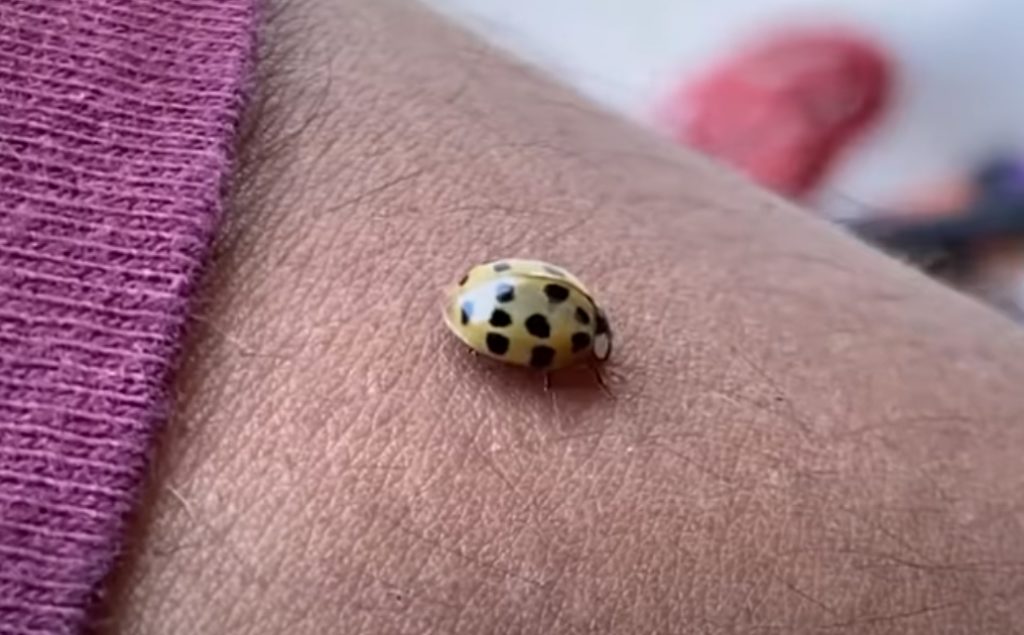
Now, let’s answer another intriguing question. Why would ladybugs, who seem so harmless and cute, ever bite humans?
- Territorial Defense: These little warriors might bite when they feel threatened or cornered, just like any other creature in the animal kingdom. It’s their instinctual way of saying, “Hey, back off!”
- Food Confusion: It’s important to remember that ladybugs are primarily insectivores, feasting on aphids and other small insects. Sometimes, they might mistake your soft skin for their regular food. Who knew, right?
Interestingly, ladybugs can also “pinch” people using their legs, which can produce a bite or mark. If you’ve ever had an unexpected welt on your skin, it might be a souvenir from a ladybug, especially if you’re allergic to them. You thought it was a mosquito, didn’t you? Well, think again!
Here’s something to ponder. Have you ever noticed how similar a ladybug bite is to a mild scratch? That’s because ladybugs possess a mandible (a movable lower jaw) that’s meant for soft-bodied insects, and they can give you a little “nip” if they mistake you for food or feel threatened.
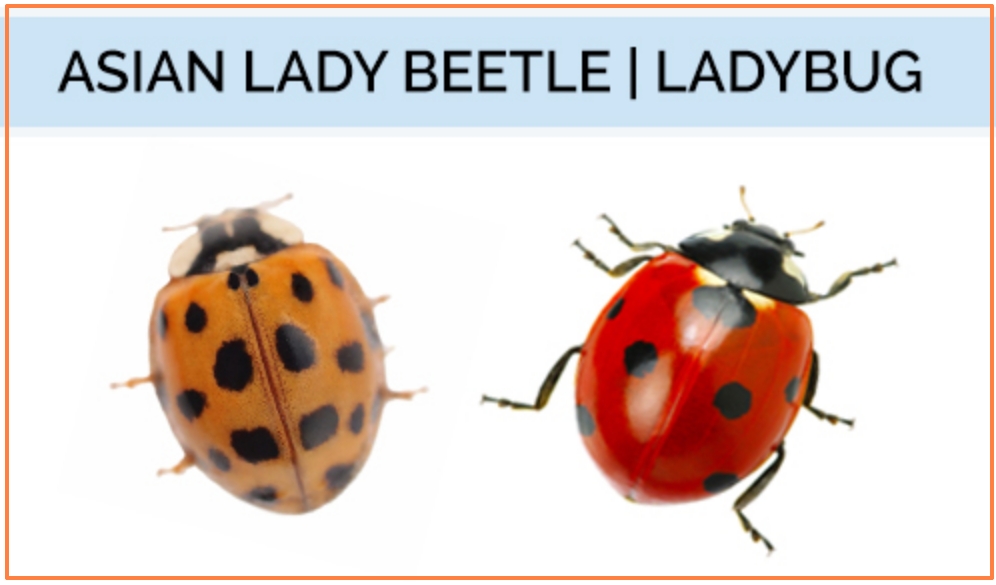
Ladybugs vs Asian Lady Beetles: A Closer Look
Contents
The term “ladybug” is often used to refer to various species of small beetles known for their round, colorful bodies. Asian lady beetles, while closely related, are not the same as the ladybugs you might typically think of. Despite their shared heritage in the Coccinellidae family, these two species have distinct differences that make them unique:
| Aspect | Ladybugs | Asian Lady Beetles |
|---|---|---|
| Size | Slightly smaller | Larger |
| Color and Spots | Bright red with black spots | Tan to orange to red with variable spot count (0-19) |
| Markings | No distinctive head markings | ‘M’ or ‘W’ marking on their head |
| Shape | More rounded or oval | More oval and a little longer |
| Behavior | Do not congregate on buildings | Known to gather in large numbers on buildings seeking shelter for winter |
| Winter Habitation | Hibernate outdoors | Seek shelter indoors in cold weather |
Isn’t it fascinating how two seemingly identical creatures can be so different? Who would’ve thought that there’s so much more to these little beetles than their size and color?
Imagine encountering a swarm of beetles congregating on a building as the weather turns chilly. You might be taken aback, thinking, “That’s not what ladybugs do!” That’s because they are likely not ladybugs but their Asian counterparts seeking a warm refuge for winter.
So, next time you see an orange-red beetle, take a closer look. Check for the distinctive ‘M’ or ‘W’ marking, observe the shape, and remember the behavior. If it’s larger, a bit longer, and perhaps deciding to winter on the side of your house, you’ve likely spotted an Asian lady beetle!
What are Ladybugs and Where do They Live
Ladybugs are a type of beetles that make a red shell or carapace. These insects live in North America, Europe, and Asia with a mild to warm climate. Ladybug larvae feed on aphids and other garden pests, while adults eat pollen and nectar from flowering plants. Ladybirds can grow up to 7 mm long with their bodies covered in spots for camouflage, and their wings have two large black areas. They also have two black antennae at the top of their heads which help them sense threats coming from above so they can fly away before predators catch them. The name ladybird comes from the words ‘lady’ and ‘bird’ because these bugs were once thought to be good luck if you found one in your house, and they were referred to as the ‘Our Lady’s bird.’
Where Did the Term “Ladybug” Come From
The term “ladybug” is a nickname for the Coccinellidae family of beetles. The name comes from the European folklore that they could prevent or cure diseases, especially children. This belief was first recorded in 1691 by John Ray and has persisted despite there being no evidence to support it.
What do Ladybugs Eat
Ladybugs are so named because they were thought to be the only insect to eat aphids.
This is not true – there are other insects, spiders, and even mammals which prey on aphids. Ladybugs have a long proboscis with which they can suck up sap from plants, but this does not mean that ladybugs will always drink anything sweet. They also need protein in their diet for reproduction purposes, just like any other animal!
Why you Should Never Touch a Ladybug With Your Bare Hands
Ladybugs are small, harmless insects found in gardens and fields. They eat aphids and other pests, so they’re great to have around. But there’s one thing you should never do: touch a ladybug with your bare hands! Ladybugs will bite if provoked or threatened – just like many other animals would. So when you find one of the flowers in your garden, please don’t go over and try to pick it up with your fingers; use a leaf or twig instead.
Ladybug Bites – What to Know Before You Go Near One
Ladybugs don’t bite people. However, they have a painful defense mechanism that shoots out a foul-smelling chemical in response to being touched or bothered. This is why it’s important not to pick them up with your hands if you see one on the ground or in a tree. If you must handle a ladybug for some reason, use something like an old credit card instead of your fingers to avoid triggering its defensive system and getting sprayed by the smelly liquid. The smell will fade away within about 10 minutes, but there are methods for eliminating it more quickly and preventing future reactions from happening again. To remove the scent from your skin, you can use an exfoliator with baking soda or hydrogen peroxide and water paste. If the smell is on your clothes, toss them in the wash with some vinegar to remove them.
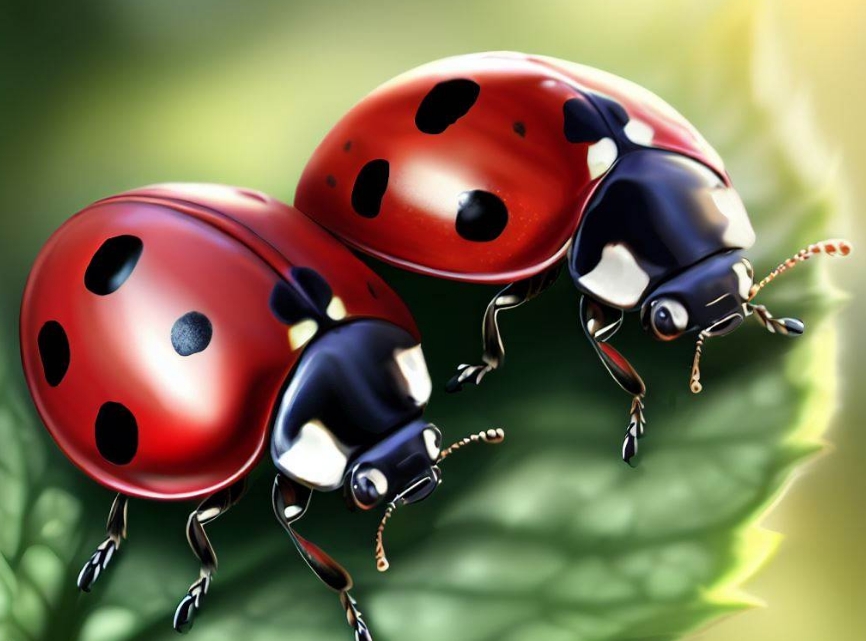
How to Get Rid of Ladybugs
Ladybugs are harmless, but they are often mistaken for being pests. They have many predators that will eat them if given a chance. Ladybugs can be removed by hand or with a vacuum cleaner. If you use a vacuum cleaner to remove ladybugs, be sure to empty them after you finish so they don’t get inside your house and die there.
Regardless of how you choose to get rid of them, remember not to kill them because they do no harm at all. Ladybugs are actually beneficial insects that help control other insect populations in your garden or on your plants!
Different Ways People Use Ladybugs for Different Purposes
Ladybugs are considered symbols of good luck and fortune, which is why many people choose them as pets. Ladybugs aren’t typically known for being aggressive or biting, but that doesn’t mean they can’t do it if they feel threatened. They also have a tendency to fly away if you try to handle them, so the best way to get one is usually just by picking it up with a leaf or something else that will keep their wings from flapping around too much. This article will discuss how people use ladybugs for other purposes, such as jewelry, keeping them as pets, and more!
- Using ladybugs in jewelry: Many different types of jewelry feature ladybugs. These tiny insects have been used to accessorize for centuries, whether it’s a necklace, ring, or earrings.
- Ladybug pet: Some people choose to keep ladybugs as pets instead of other animals like hamsters or gerbils. This is usually because they don’t require much care, and they’re relatively easy to find. All you need is a jar with some holes poked in the lid, some water and food, and a few ladybugs!
- Ladybug garden: Ladybugs are also used in gardens to help control pests. Releasing ladybugs into your garden will eat the aphids and other bugs that can damage plants.
FAQs about Do Ladybugs Bite
What are the signs of a ladybug bite?
There are typically no signs of a ladybug bite. In sporadic cases, people may experience a mild allergic reaction.
What should you do if you’re bitten by a ladybug?
There is no specific treatment for a ladybug bite. If you experience any symptoms, such as swelling or redness, seek medical attention.
How do you treat a ladybug bite?
Ladybugs can bite people when they are put into a dangerous situation. If you have been bitten by a ladybug, there is no need to worry about the injury. A ladybug’s mouthparts do not pierce human skin, and they cannot cause any real damage with their bites; however, it will still be painful for up to an hour. Additionally, if this happens in your garden or near your crops, most likely it has already left its mark on them as well!
Why are there so many ladybugs if they don’t bite?
Scientists aren’t sure why there are so many ladybugs. Some think it may be due to the changing environment, while others believe it may be because of pesticides or other chemicals in the air.
What Is the Chemical That Asian Lady Beetles Release?
The yellow, foul-smelling liquid that Asian lady beetles release upon biting or being disturbed is called “hemolymph.” It’s essentially their blood and is part of their defense mechanism. This reflexive discharge of hemolymph is known as “reflex bleeding” or “autohemorrhaging.”
Hemolymph serves two main purposes:
- Defense: It deters predators with its foul smell and taste.
- Staining: It leaves a noticeable, hard-to-remove stain, which acts as a visual warning to other potential predators.
How to Identify an Asian Lady Beetle?
Given their close resemblance to ladybugs, distinguishing an Asian lady beetle can be a bit of a challenge. However, here are a few identifying features to help you out:
- Color and Pattern: Asian lady beetles can vary widely in color, ranging from yellow-orange to black. Additionally, they can have zero to nineteen spots, which can sometimes make them look spotless or heavily spotted.
- ‘M’-shaped Mark: One distinctive feature of Asian lady beetles is the ‘M’ or ‘W’-shaped mark on their pronotum (the area right behind their head). This feature sets them apart from their native counterparts.
- Shape: While ladybugs are typically round, Asian lady beetles have a slightly more oval shape.
